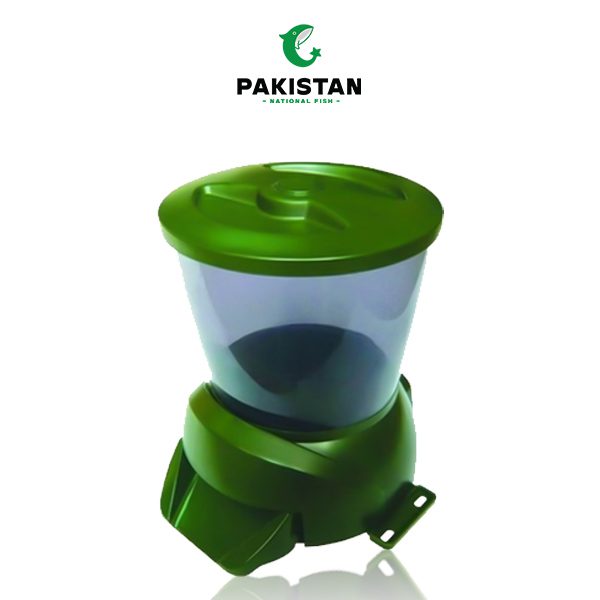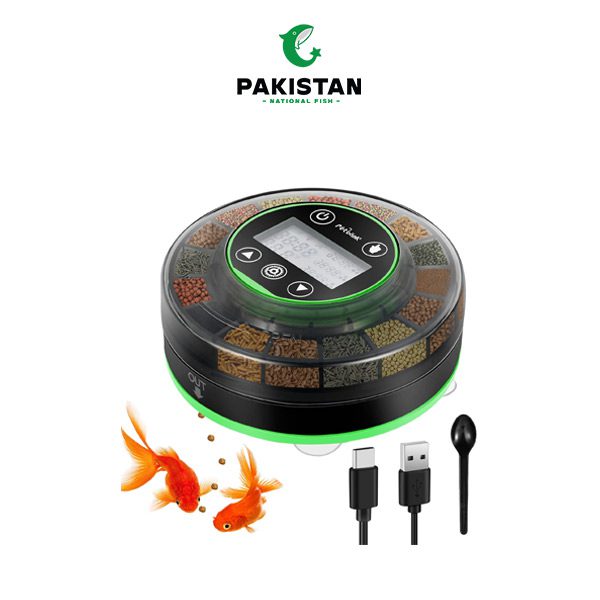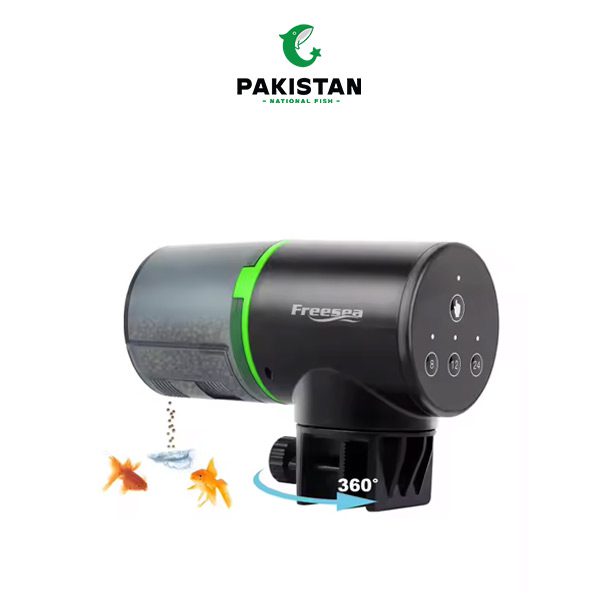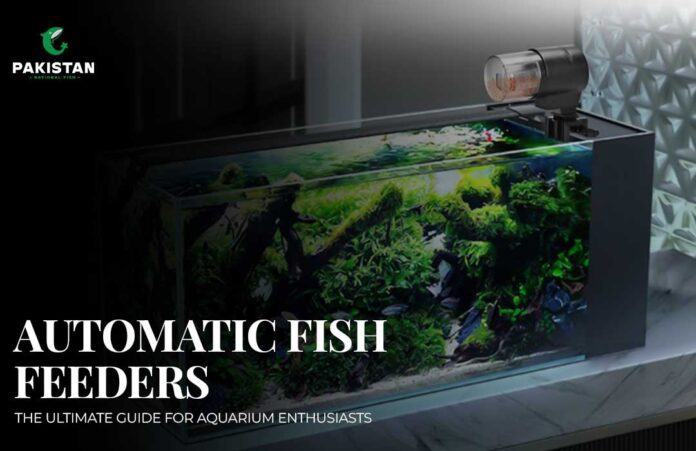From this perspective, the timing and portioning of food among the fish need to conform to the hobbyist’s aquarium if the fish tank has to be healthy. Automatic fish feeders are a boon for such situations and can even be useful for those who prefer not to worry about a precise feeding time.
The features of an automatic fish feeder, the different varieties available, how to set up the device, and some tips on how to maintain it so that you can select the best feeder for your aquarium.
What Is an Automatic Fish Feeder?
An automatic fish feeder is a machine programmed to feed your fish by releasing pellets of specified precoded amounts at fixed time intervals. The vast majority of models are, in fact, programmable, which means that feeding schedules and portions can be easily altered.
Automatic feeders are particularly useful to aquarists with lots of work and engagement, or people who travel a lot, since they provide fish with food independent of the aquarist’s presence or schedule.
An Automatic Fish Feeder: Why Use It?
Automatic fish feeders bring several benefits to aquarium fish care:
- Convenience: It takes care of feeding and thus can minimize the hourly requirement for feeding the animals.
- Consistency: Depending on the timing set, automatic feeders help avoid overfeeding or underfeeding fish which is also very dangerous.
- Controlled Portions: Measures portion control enables reducers to avoid setting large portions of food in the tank to rot hence affecting the water quality.
- Peace of Mind: As we are aware we may be at work, on a business trip, or just have a busy schedule an automatic feeder comes in handy when it comes to feeding the fish.
Different Kinds of Automatic Fish Feeders
Different types of feeders cater to various aquarium setups and fish species:
- Rotary Barrel Feeders:
These feeders have a barrel-shaped feeder compartment that is hinged and rotates so that the food can be dispensed. Available in electric and hydraulic models, they are appropriate for flake, pellet, or granular food types and are fairly easy to set up.

- Portion-Control Feeders:
These kinds of feeders have separate sections for portion sizes that can be preset. They dispense food at each time set; hence they are suitable for use during holidays or when the feeding time is different.

- Block Feeders:
These are not electronic feeders because what is supplied to the fish is not fed electronically but is bulky and compressed fish food that disintegrates as time goes on. Although cheap those are not as accurate, and serve better for a few days on the weekend, for instance.

Integrated Feeders with Aquarium Systems:
There are advanced and deluxe aquarium systems available that contain feeders as part of the setting together with the filtration as well as the lighting equipment most suitable for high-end tanks and other elaborate designs.

Key Features to Consider
When selecting an automatic fish feeder, look for features that match your needs:
- Programmable Timers: Select a feeder with a good timer, enabling the farmer to program the feeder several times a day that will be suitable for specific species of fish.
- Portion Control: Models that have portions that one can adjust to make changes in the amount of food dispensed are the best. This feature is very important as overfeeding is detrimental to water in use, especially in fish farming.
- Food Compatibility: Parents are feeding different types of foods to small children. Make sure that the feeder is designed for your fish food type and sorted into flakes, pellets, or freeze-dried versions.
- Power Source: Again, feeders can be battery operated or plugged in though most are battery operated due to flexibility in constituents and most likely not have power outlets in the vicinity of the aquarium setup.
- Moisture Control: Fish food pellets stick together when they come in contact with moisture, the effect being that they block the feeder. It is common to find feeders with some sort of moisture management system such as a fan or moisture-tight section to avoid lumping.
- Capacity: This kernel should have the right capability for the water tank or in the occurrence of a penetrating spree. Small feeders might need to be filled quite often.
How To Properly Use Your Automatic Fish Feeder
It means you must service your feeder often to sustain steady operations. First, it is recommended to clean the food compartment every three weeks because residue food retains moisture or bacteria which compromises the freshness of foods to be stored. Another thing, one should ensure there is no moisture in the feeder since foods may clump together.
If your feeder is not equipped with means to control the quantity of moisture, one can use silica gel packets, but place them outside the food compartment. If the feeder is battery-powered, make sure you replace the batteries on time to avoid sudden rundown; most feeders signal low battery levels.
Selecting Appropriate Diet For Self-Fill Feeder
Selecting the right food type is as important as choosing the right feeder:
- Flake Food: May be very useful across many feeder types, but it tends to break down into smaller particles. Perfect for public water aquaria.
- Pellet Food: The small size of pellets makes it easy to manage portions and the density of the product makes it good for large fish species. But make sure that your feeder is capable of handling the size of the pellets you intend to feed to your birds.
- Freeze-Dried or Specialty Foods: Not all feeders can accommodate freeze-dried or living foods, so always look for this information about the feeder.
When Not to Use an Automatic Feeder
While automatic feeders are highly convenient, they may not be suitable in every situation:
- Special Diet Fish: Carnivorous fish and those that need fresh or live food will not do well in an aquarium with an automatic feeder.
- Breeding Tanks: Fish fry and other young fish may require special feeding regimes in that they should be fed small portions of food several times daily.
- Quarantine Tanks: In a quarantine tank it is best to feed fish manually to know more about the fish’s food intake and the overall activity of the fish.


